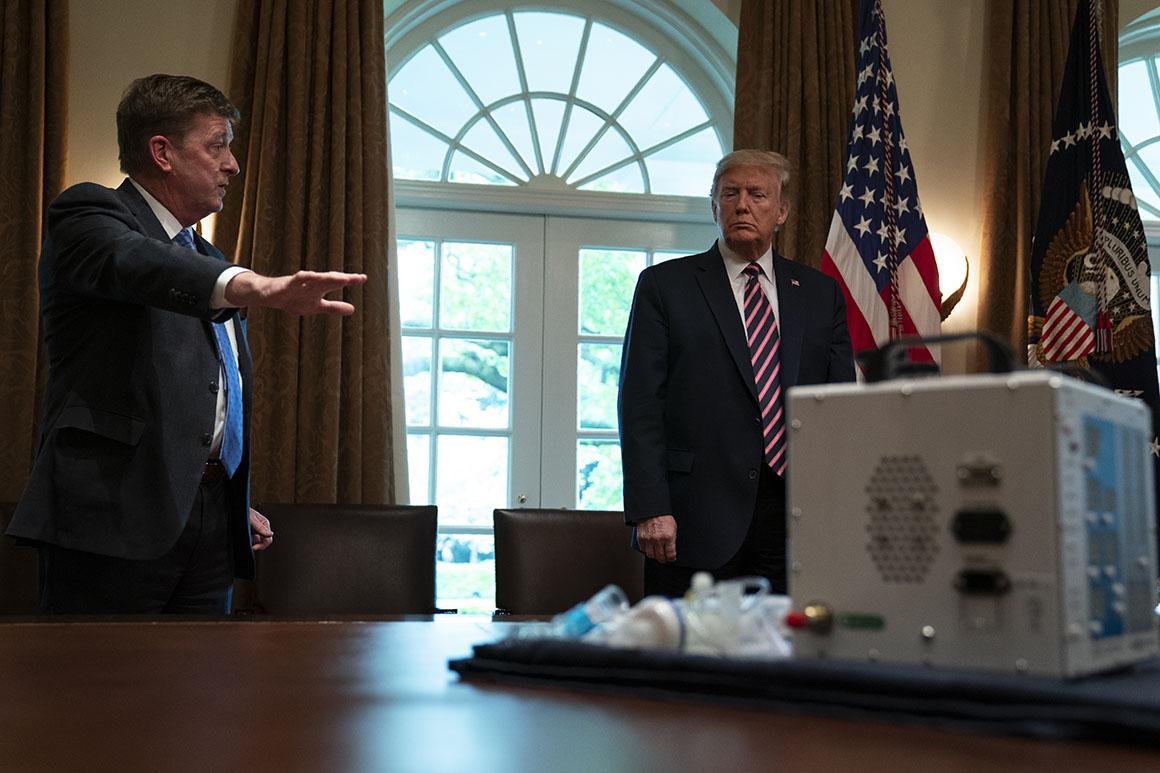
At the same time, there has been a shifting mindset among doctors over when to put coronavirus patients on the machines to help them breathe. Reports published by the Associated Press and Reuters last month revealed that some medical professionals were reevaluating the use of ventilators after preliminary data suggested higher than normal death rates associated with coronavirus patients put on ventilators. In New York, Cuomo, a Democrat, said 80 percent of the state’s coronavirus patients put on ventilators had died.
The confluence of events has helped create an unexpected surplus of ventilators across the country.
In California, which implemented the country’s first statewide stay-at-home order, Democratic Gov. Gavin Newsom started sending 500 of his state’s ventilators to other locations in early April.
In New York, which has tallied more than 300,000 known cases of Covid-19, the disease caused by the novel coronavirus, and more than 18,000 deaths, Cuomo hasn’t expressed a need for more ventilators in his state since early April.
“We’ve stabilized the health care situation,” he said in mid April, announcing that he was shipping off 100 ventilators to Michigan, and 50 to Maryland. Days later Cuomo said his administration had identified as many as 400 ventilators it could send to Massachusetts on short notice. Later it shipped 100 ventilators to neighboring New Jersey.
At the White House, Trump boasted about the progress. “Because of our early and aggressive action, we have avoided the tragedy of health care rationing and deadly shortfalls that have befallen many other nations,” he said on April 16.
Days later, New Jersey decided it, too, could spare ventilators, sending 50 to Massachusetts and returning 100 of the machines that it had received from California.
In Washington, D.C., administration officials began drafting a plan to donate excess ventilators to African countries battling the virus.
Trump last week complained that the situation wasn’t getting enough attention, appearing aggrieved that he was getting so many questions about the ongoing testing shortages that could hamper state’s attempts to reopen sectors of the economy.
“We’re making hundreds of thousands of ventilators right now,” Trump said. “Nobody writes about that. You know, at the one time, all they talked about was ventilators, right?”
When Trump met with three governors of hard-hit states at the White House this week, he made sure to bring up the subject of ventilator supply — eliciting praise for the government’s response.
Democratic Gov. John Bel Edwards of Louisiana told the president his state had “certainly had more than we needed” when it came to ventilators, thanking Trump for 350 ventilators from the national stockpile. “We’re thanking God for that,” he said, “because … the modeling was so bad at one time.”
The White House is now proclaiming that the ventilator problem is solved, despite a widespread expectation that there will be a second wave of coronavirus in the fall.
“We will never have to worry about ventilators again. We’ve got plenty of them,” said Peter Navarro, a trade adviser at the White House and the aide tapped to oversee Trump’s use of the DPA. “The demand is far less than the original projections at the height of the panic.”
Navarro, who made his comments while traveling with Pence on Thursday to the GM facility, conceded that FEMA’s stores of ventilators “really weren’t set up for a sustained pandemic,” calling it a lesson learned by the administration.
The administration, he said, was debating whether to significantly expand the national ventilator stockpile, or whether to rethink the concept of a federal stockpile altogether.
“You can have a physical stockpile at FEMA and you can also have a stockpile at the production level, with reserves,” he argued.
Source: politico.com
See more here: news365.stream






